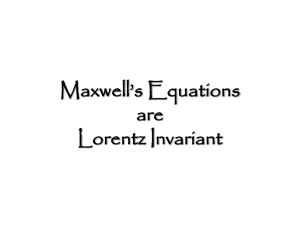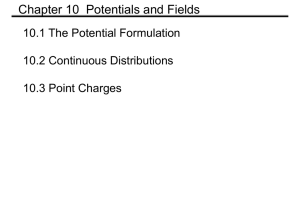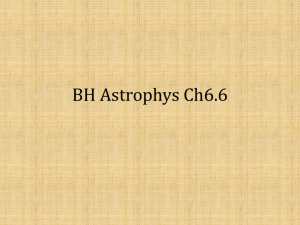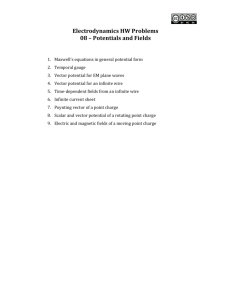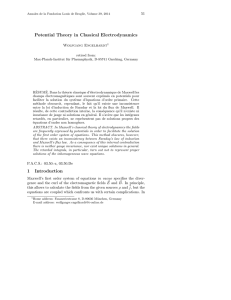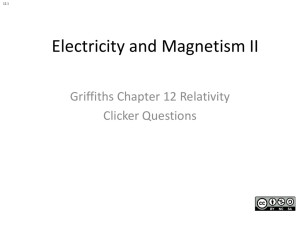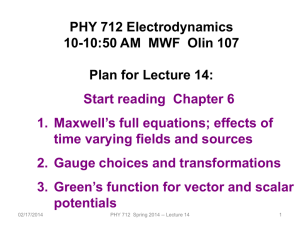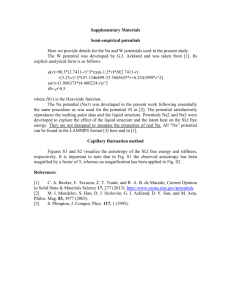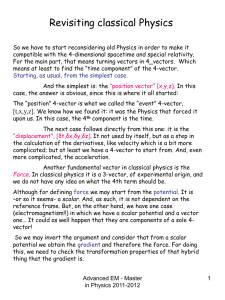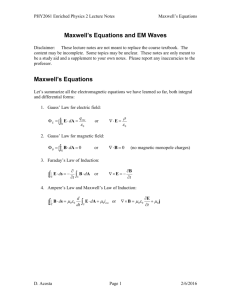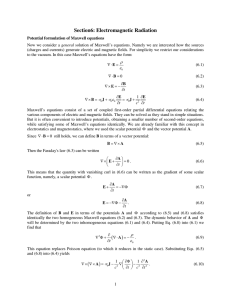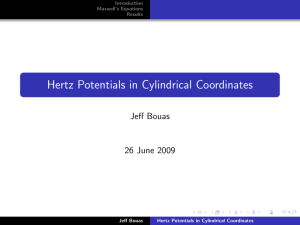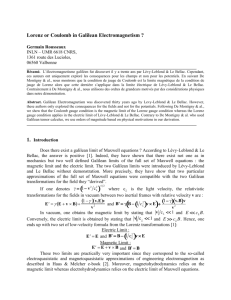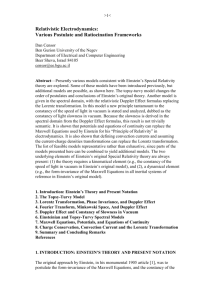Review of E&M, Maxwell`s Equations, and 4
advertisement
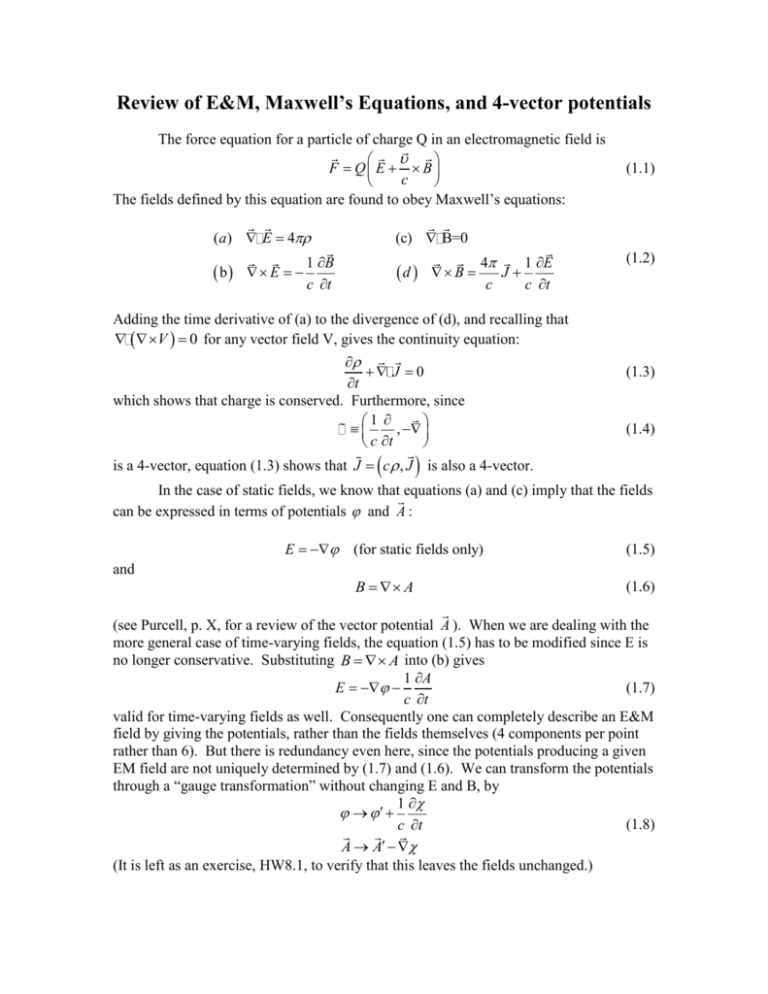
Review of E&M, Maxwell’s Equations, and 4-vector potentials The force equation for a particle of charge Q in an electromagnetic field is F Q E B c The fields defined by this equation are found to obey Maxwell’s equations: (a) E 4 b E (1.1) (c) B=0 1 B c t d B 4 1 E J c c t (1.2) Adding the time derivative of (a) to the divergence of (d), and recalling that V 0 for any vector field V, gives the continuity equation: J 0 t which shows that charge is conserved. Furthermore, since 1 , c t (1.3) (1.4) is a 4-vector, equation (1.3) shows that J c , J is also a 4-vector. In the case of static fields, we know that equations (a) and (c) imply that the fields can be expressed in terms of potentials and A : E and (for static fields only) (1.5) B A (1.6) (see Purcell, p. X, for a review of the vector potential A ). When we are dealing with the more general case of time-varying fields, the equation (1.5) has to be modified since E is no longer conservative. Substituting B A into (b) gives 1 A E (1.7) c t valid for time-varying fields as well. Consequently one can completely describe an E&M field by giving the potentials, rather than the fields themselves (4 components per point rather than 6). But there is redundancy even here, since the potentials producing a given EM field are not uniquely determined by (1.7) and (1.6). We can transform the potentials through a “gauge transformation” without changing E and B, by 1 (1.8) c t A A (It is left as an exercise, HW8.1, to verify that this leaves the fields unchanged.) This freedom allows one to choose a gauge that simplifies the equations. In particular, if we write E and B in terms of the potentials in Maxwell’s source equations (a) and (d), we get 1 2 A 4 c t (1.9) 1 2 A 1 4 2 A 2 2 A J c t c t c We can always choose a gauge that sets 1 A (the Lorentz gauge) (1.10) c t (see Shankar problem 18.4.3, in Examples). Making this transformation converts equations (1.9) into 4 4 2 2 A c (1.11) J where 2 1 2 2 2 c t (1.12) We can learn a lot from equations (1.11). First of all, note that and J c, J is a 4-vector, so A , A is a 4-vector 2 is a Lorentz scalar, (1.13) in the Lorentz gauge. Secondly, in free spaced ( 0, J 0 ) both of these reduce to the wave equation: 1 2 A r , t 2 A r , t 0 (1.14) 2 2 c t Note that this equation is solved, in the case of plane waves moving in the x-direction, by any function of the form A x, t f ( x 0t ) , with 0 c . Such a solution propagates (undistorted) in the positive x-direction at velocity c. A sinusoidal plane wave solution has the form A r , t A0 cos k r t (1.15) 2 Ar ,t The E and B fields carried by the wave are given by 1 A E A0 sin k r t c t c B A k A0 sin k r t Since ck , E B . (1.16)
